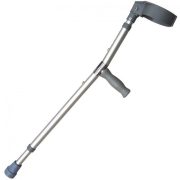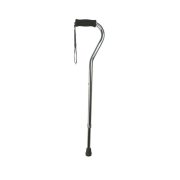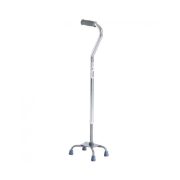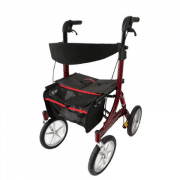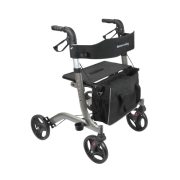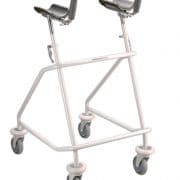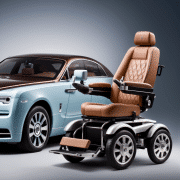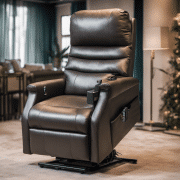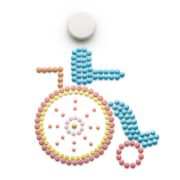Understanding Mobility Aids: Types, Uses and Benefits
In a fast-moving world, the idea of relying on assistance can sometimes be daunting. But imagine if the right kind of assistance could make you more independent? That’s the wonder of mobility aids. Whether you’re recovering from an injury or dealing with a long-term disability, mobility aids are here to give you power. Let’s explore...

In a fast-moving world, the idea of relying on assistance can sometimes be daunting. But imagine if the right kind of assistance could make you more independent? That’s the wonder of mobility aids. Whether you’re recovering from an injury or dealing with a long-term disability, mobility aids are here to give you power. Let’s explore the diverse world of mobility aids to equip you with insights to choose the perfect aid for your unique needs.
Understanding the Spectrum of Mobility Aids
Beyond Wheelchairs: While wheelchairs are perfect for those who face difficulties in walking or standing, there’s a vast category of individuals who possess the ability to walk, albeit with support. Imagine being a little wobbly on your feet or experiencing fatigue during longer walks. This is where mobility aids like walking frames, crutches, and canes come to your rescue, allowing you to maintain your independence while offering the support you need.
Fostering Inclusion Through Mobility Aids: Whether it’s a temporary injury or a more permanent mobility challenge, these aids pave the way for an improved quality of life. They transform daily tasks from struggles to achievements, and social activities from hurdles to opportunities. Mobility aids are bridges to a life that embraces movement, regardless of the circumstances.
Navigating the World of Mobility Aids
Choosing Your Walking Companion: When it comes to selecting the right mobility aid, a multitude of options are available to you. There are crutches for those needing support during recovery, canes for extra stability, walking frames for reliable balance, and rollators for a mix of mobility and convenience.
Tailoring Your Choice: Consider your unique situation and needs. Do you require temporary or long-term assistance? Are you looking for lightweight portability or added stability? Each aid has its own set of pros and cons, making it essential to match your choice to your requirements.
Unleashing the Power of Mobility Aids
Mobility aids are not just tools; they’re pathways to better living. They enhance balance, refine walking patterns, and increase stability. They act as safety nets, reducing the risk of falls and minimising the need for constant assistance. As a result, you’re granted the freedom to participate in your community, engage with your environment, and pursue the activities that bring you joy.
Crutches: From Temporary Support to Lasting Confidence
Crutches serve as steadfast companions during the recovery phase following injuries. By transferring weight from lower limbs to the upper body, they provide the necessary support while maintaining mobility. Crafted primarily from lightweight aluminium, crutches come in different styles.
- Axillary or underarm crutches: These feature a part that rests under the armpit and against the ribcage, accompanied by a handgrip. Suited for short-term injuries, they offer support during recovery from surgeries or injuries.
- Loftstrand or forearm crutches: Involve the forearm being positioned into a cuff while holding a hand grip. These are ideal for long-term disabilities and accommodate diverse walking styles.
- Platform crutches: Designed for individuals with weak hand grips due to pre-existing conditions, have a handgrip and a horizontal platform for the forearm.
Canes: Stepping into Independence
Walking sticks and canes represent a simpler form of mobility aid, aiding those who require added confidence while navigating uneven surfaces and steps. Similar to crutches, canes help in redistributing body weight, thereby relieving pressure from specific areas. Walking sticks and canes are generally crafted from lightweight aluminium, featuring a moulded hand grip for comfort and a rubber tip for support. Available in various styles, including straight walking sticks and curved neck designs, canes provide essential assistance for independent walkers.
- White canes: Suited for individuals who are visually impaired. These canes are longer and thinner and allow the user to detect objects that stand in their path.
- Quad canes: Have four feet at their wide base to provide enhanced stability.
- Forearm canes: Offers more support to the forearm area. These canes can distribute the weight from the wrist to the arm.
Walking Frames: Walking with Assured Stability
Walking frames offer robust support, making them ideal for individuals in need of assistance with balance. Particularly beneficial on flat surfaces, these frames come in a standard design featuring four legs for reliable stability. Walking frames necessitate lifting the frame and moving forward one step at a time. While they offer stability, they can be tiring for extended use or on uneven terrain.
- Standard Walking Frame: This is the basic and most common type of walking frame. It consists of a simple, lightweight frame with four legs for stability.
- Folding Walking Frame: Similar to a standard walking frame, folding frames offer the convenience of being collapsible. This feature makes them easier to transport and store when not in use.
- Wheeled Walking Frame: Some walking frames come equipped with wheels on the front legs. These wheels allow for smoother movement, making it easier for individuals to push the walker forward without having to lift it completely.
- Forearm Walking Frame: Also known as a platform walker, this type of frame has arm cuffs that support the forearms, allowing users to bear weight on their forearms rather than their hands.
Rollators: Mobility Meets Convenience
Rollators combine wheels with a braking system, delivering maneuverability and energy conservation. Catering to individuals who require balance support along with the convenience of wheels, rollators redefine the concept of mobility aid. Unlike traditional walking frames, rollators eliminate the need for lifting, conserving energy.
Rollators offer padded seats for resting and baskets for carrying items and have swivel castors on the front wheels for enhanced turning. Rollators cater to various needs, including standard rollators, knee walkers for resting the knee, and walker-cane hybrids offering increased support.
- Three-Wheel Rollator: This type of rollator has three wheels and offers better maneuverability, making it suitable for navigating through tight spaces or crowded areas.
- Four-Wheel Rollator: Similar to the three-wheel version, the four-wheel rollator provides stability and balance support, making it ideal for longer walks.
- U-Step Walker: Designed for individuals with conditions like Parkinson’s disease or other neurological disorders. They often have advanced features like stability control and braking mechanisms that help prevent falls.
Wheelchairs: Empowering mobility
Wheelchairs cater to individuals who cannot bear weight on their lower limbs or have difficulty walking. Manual and electric wheelchairs provide solutions for different needs, with standing wheelchairs supporting upright positions and sports wheelchairs designed for specific activities.
- Manual Wheelchair: Operated by the user or a caregiver pushing the chair’s wheels by hand.
- Power Wheelchairs: Electrically powered, these wheelchairs offer more independence for individuals who have difficulty propelling a manual wheelchair.
Mobility Scooters: Freedom on Wheels
Battery-powered mobility scooters with seats and multiple wheels grant freedom of movement. Individuals who lack the strength for manual wheelchairs find these scooters invaluable. With foot plates and handlebars for steering, mobility scooters offer an alternative means of mobility.
- Three-wheel scooters: Offer tighter turning radiuses, making them suitable for maneuvering through indoor spaces and navigating crowded areas.
- Four-wheel scooters: Provide more stability and balance, making them ideal for outdoor use and uneven terrains.
Each aid serves a distinct purpose, ensuring that everyone can step confidently towards greater independence and freedom of movement.
Mobility Aids Accessories
Mobility aids accessories enhance functionality and convenience, including storage pouches, trays, cup holders, and ramps. Ramps offer smooth pathways over obstacles, with threshold ramps for small height differences, portable ramps for curbs, and permanent ramps for lasting accessibility. Ramps enhance inclusivity indoors and outdoors, though installation and storage are factors. Accessories offer personalisation, adding versatility and user-friendliness to mobility aids. It is worth noting that excessive accessories can impact maneuverability.
The NDIS Connection: Paving the Way for Independence
The National Disability Insurance Scheme (NDIS) recognises the transformative potential of mobility aids. As tools that promote mobility and independence, mobility aids fall under NDIS funding. This ensures that individuals can access the aids needed to enhance their quality of life.
Expert Guidance: The Key to Finding Your Perfect Fit
Choosing the right mobility aid requires expert guidance. Occupational therapists and physiotherapists possess the knowledge and expertise to assess individual needs accurately. By considering medical history, mobility challenges, and personal goals, these professionals prescribe the optimal aid that aligns with individual requirements.
Embrace Independence with Mobility Aids
Mobility aids are not just tools; they’re enablers of freedom. They liberate you from limitations, allowing you to rewrite your story of what’s possible. Whether you’re traversing the world with crutches, finding balance with canes, embracing stability with walking frames, or cruising confidently with scooters, these aids are your allies in your quest for a life unbound by constraints. Embrace the journey, empower yourself, and redefine your sense of mobility with the aid that speaks to your needs. After all, the power to move lies within you – and with the right mobility aid, that power can shine brighter than ever before.
Recommended Reading
Patient Transfer Aids
How to Choose the Right Toilet Aid
How to use a Leg Lifter
Preferred Suppliers for the Healthcare Industry Since 2003
Patient Handling is founded on a sound base of great staff, great products and great partners. We strive to put our clients needs above all else and focus on well thought out solutions for complex needs.



Receive latest news
Contact Us
We are an online store only. Please contact us if you would like a product specialist to assist with your purchase.












